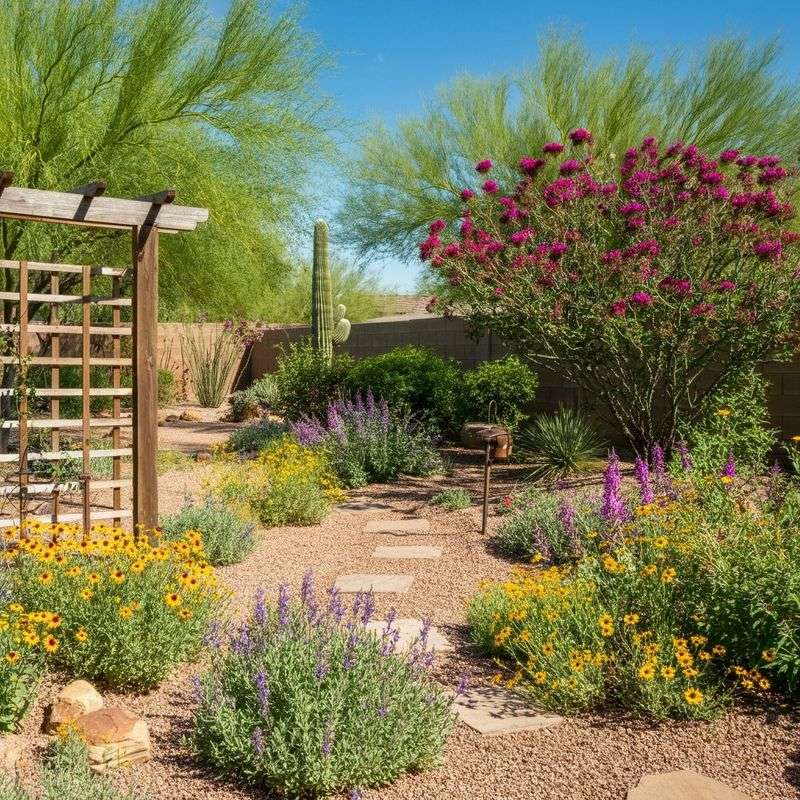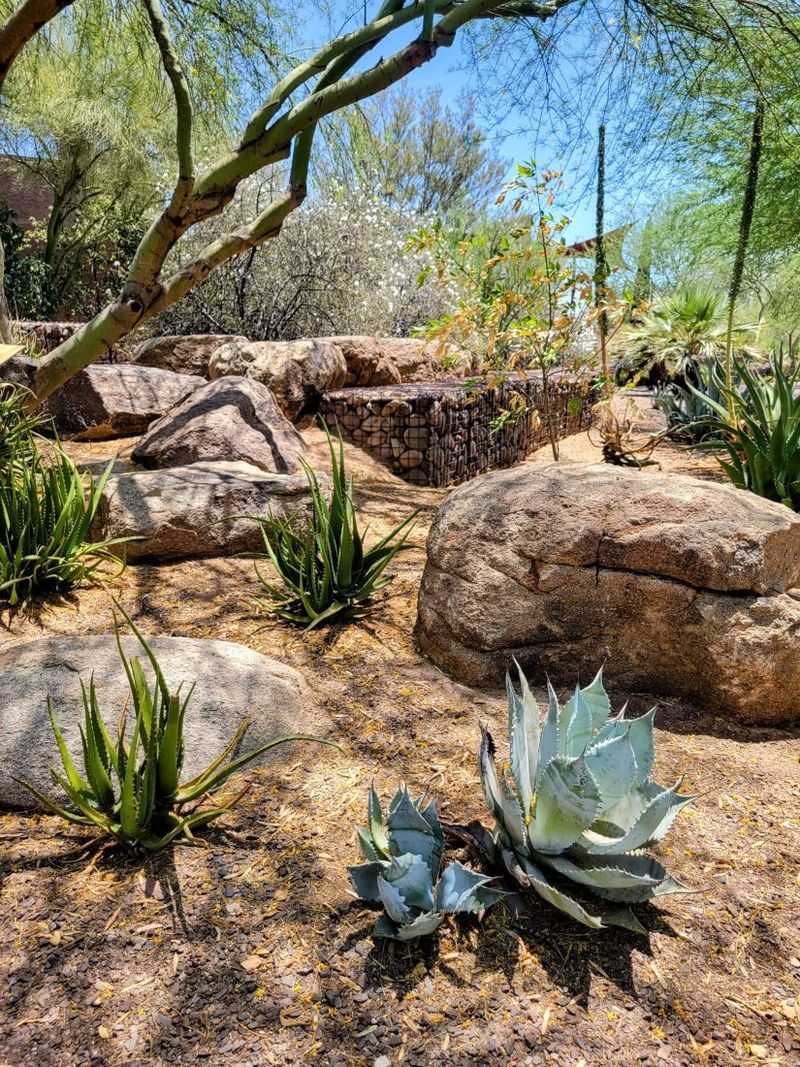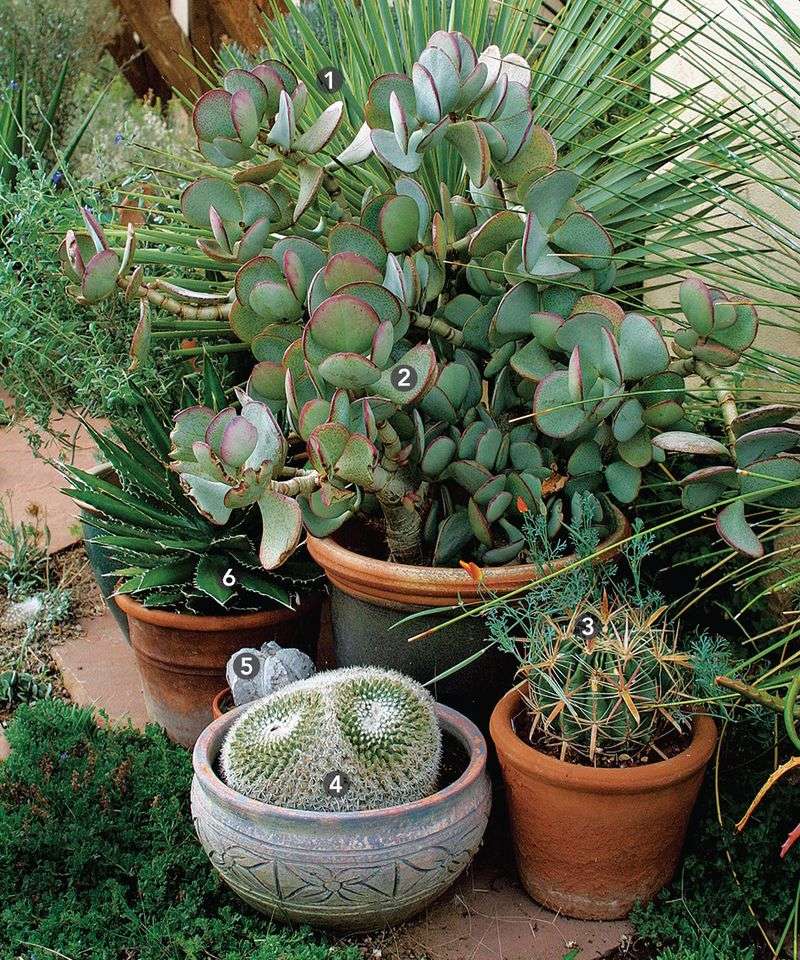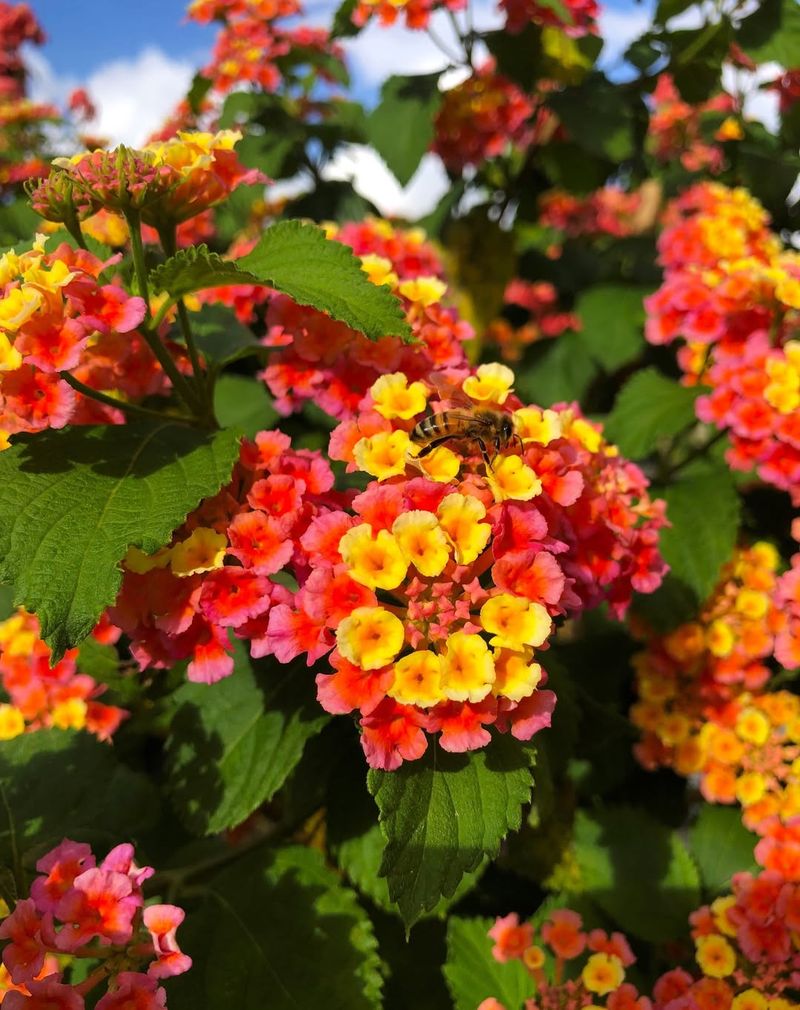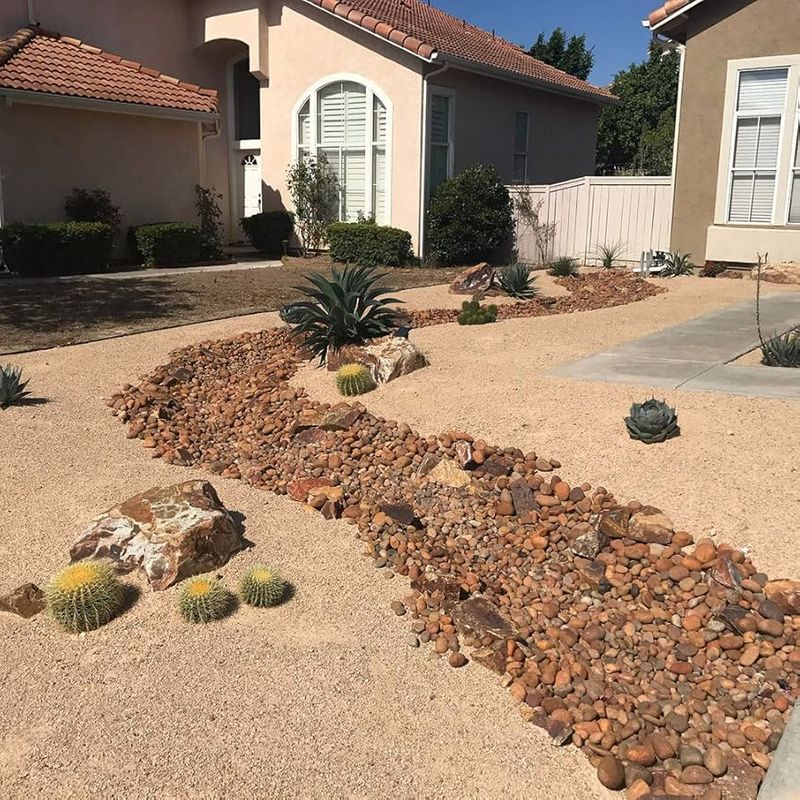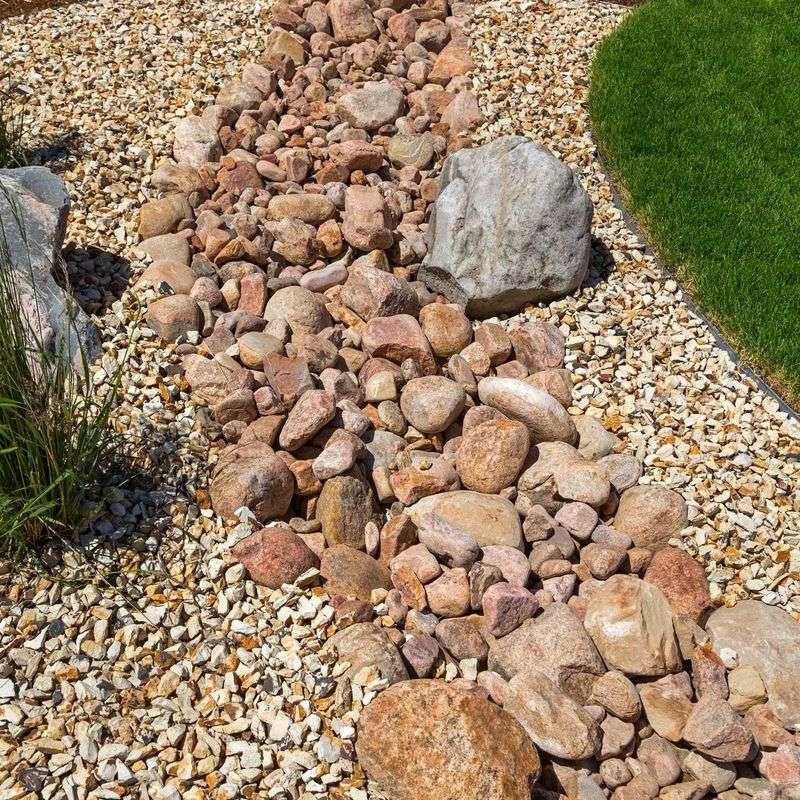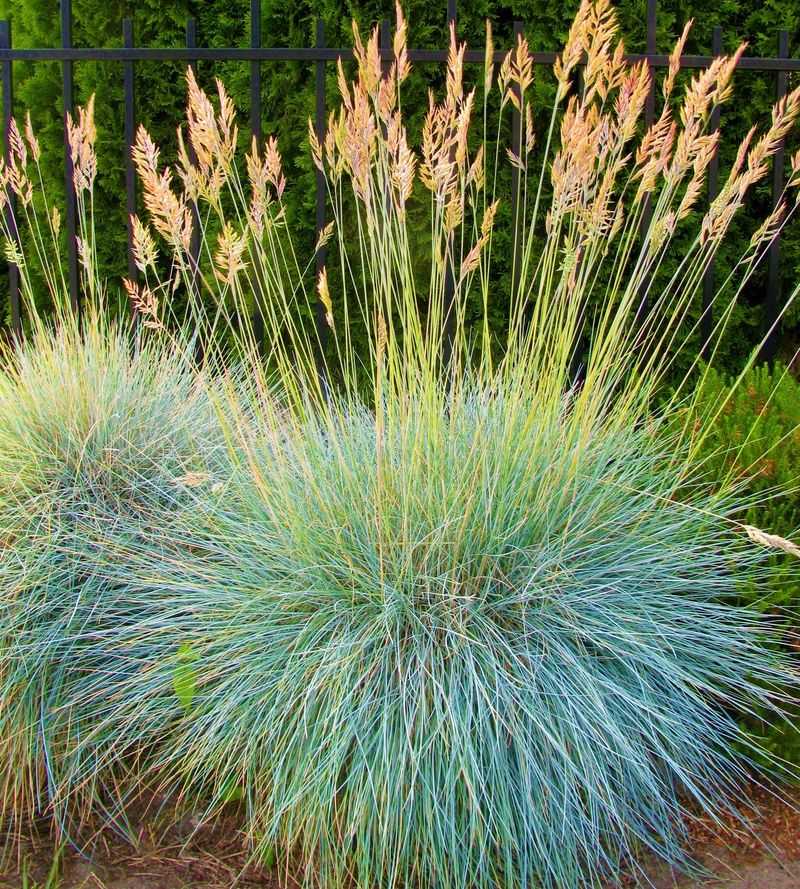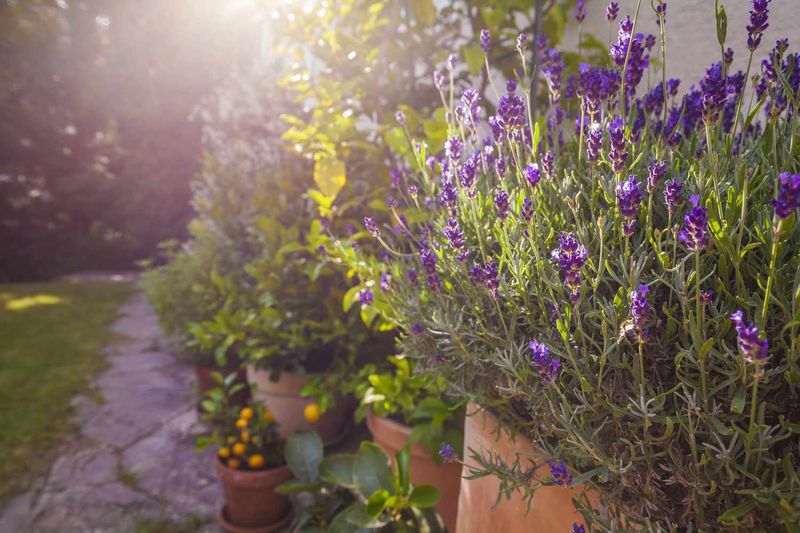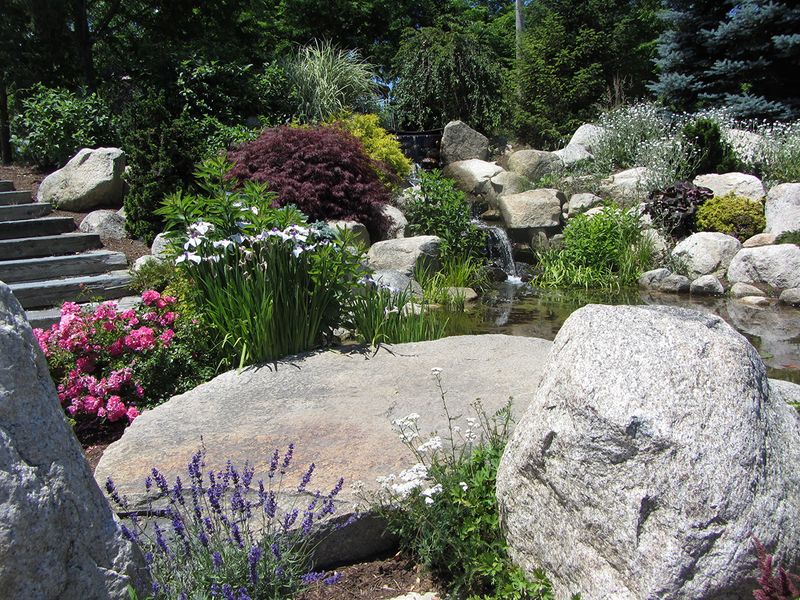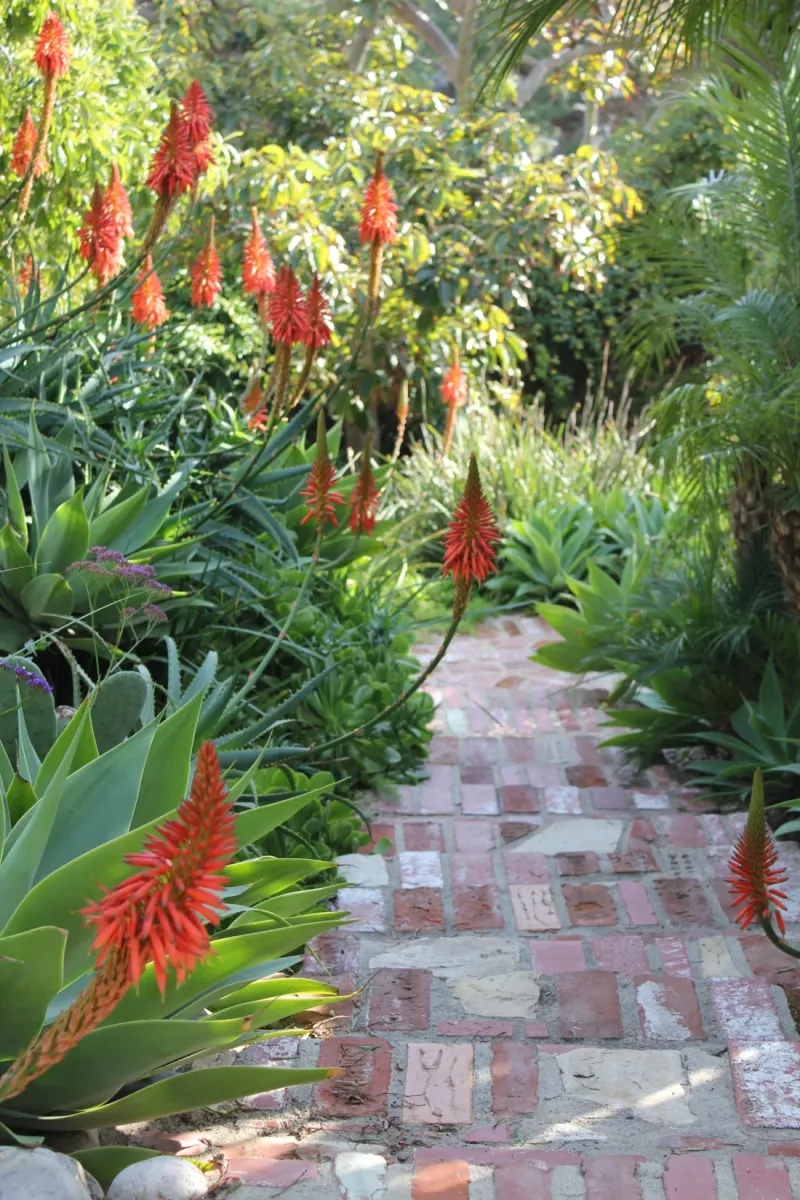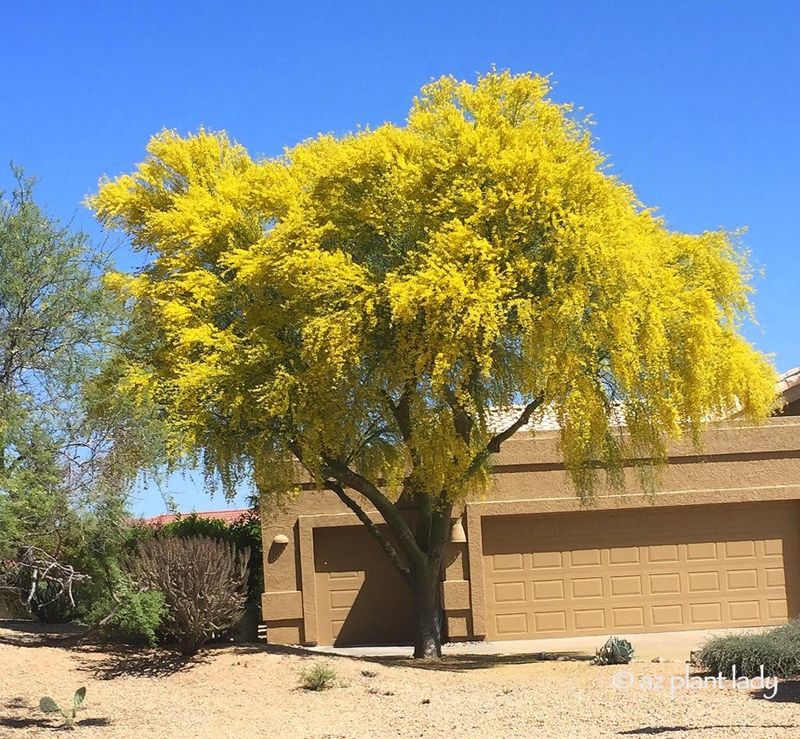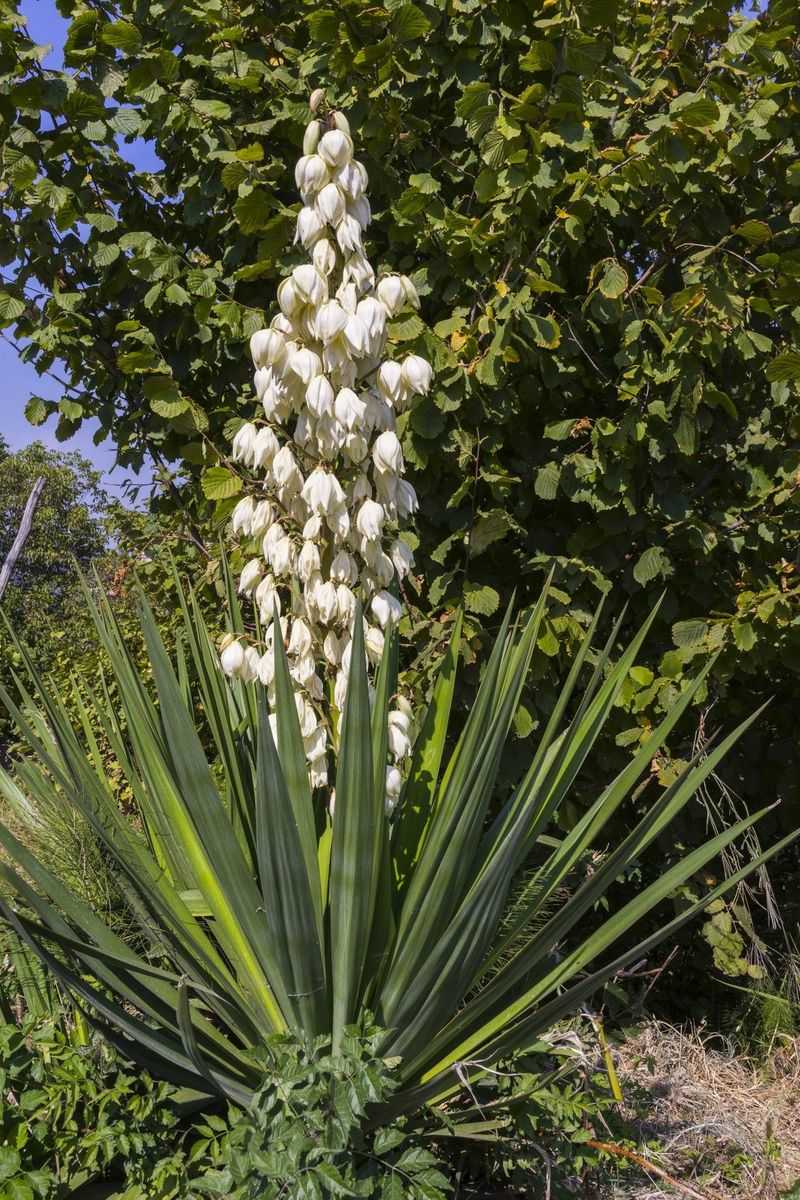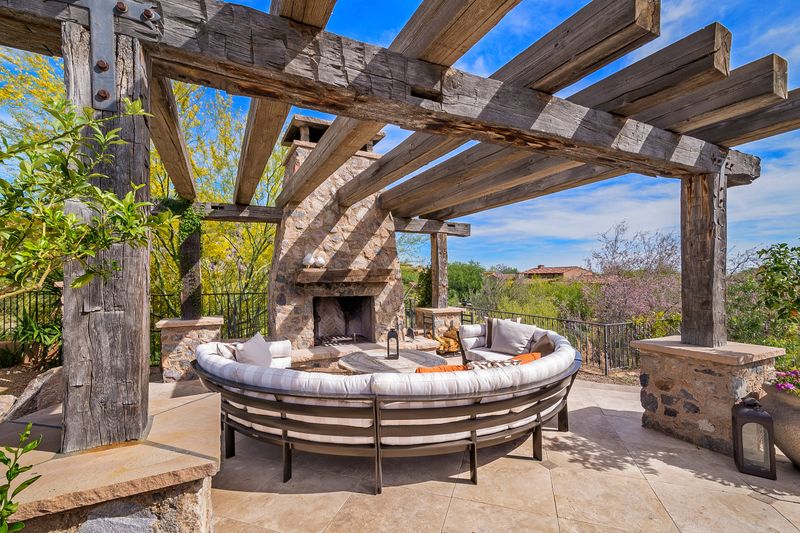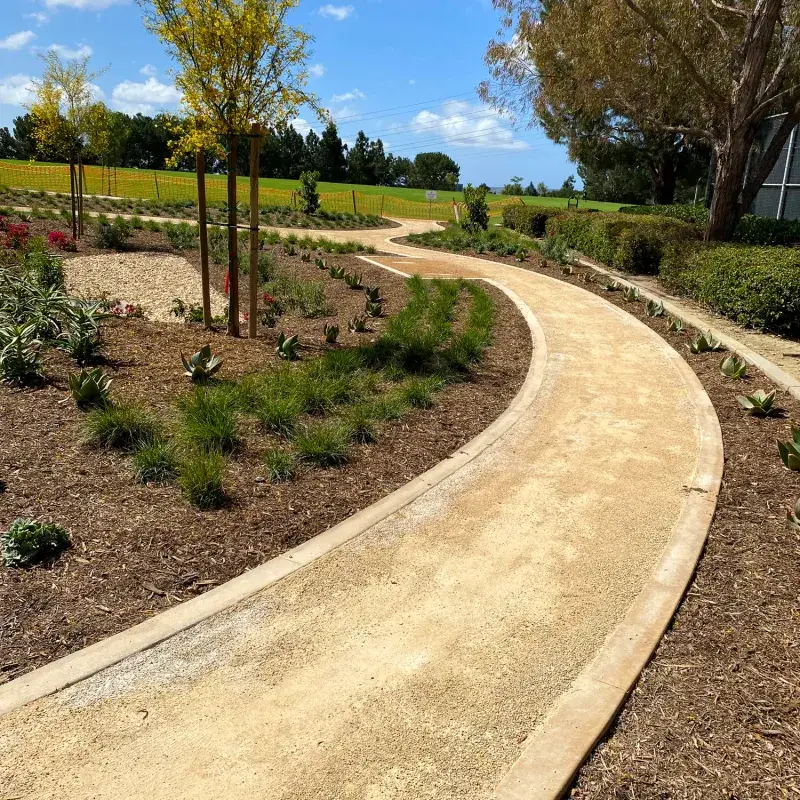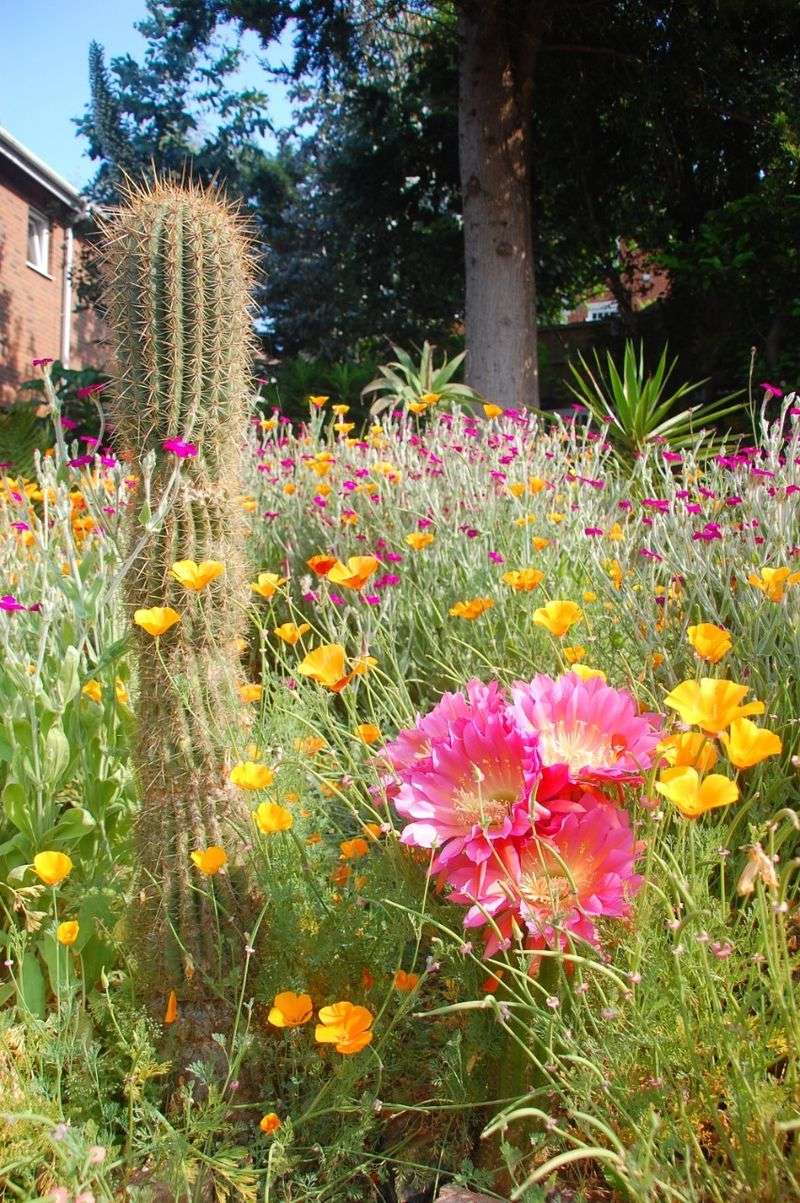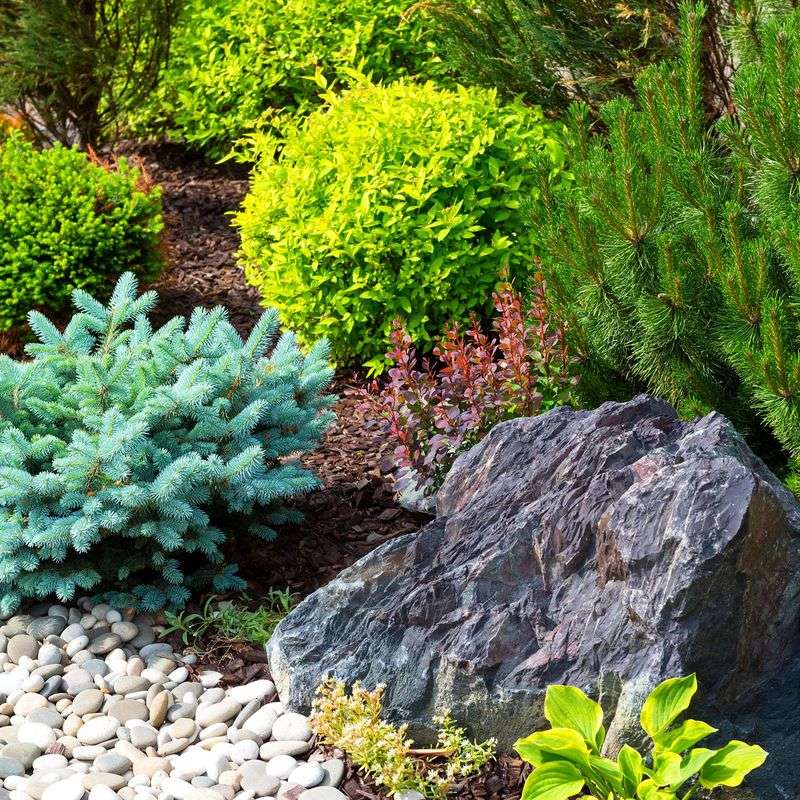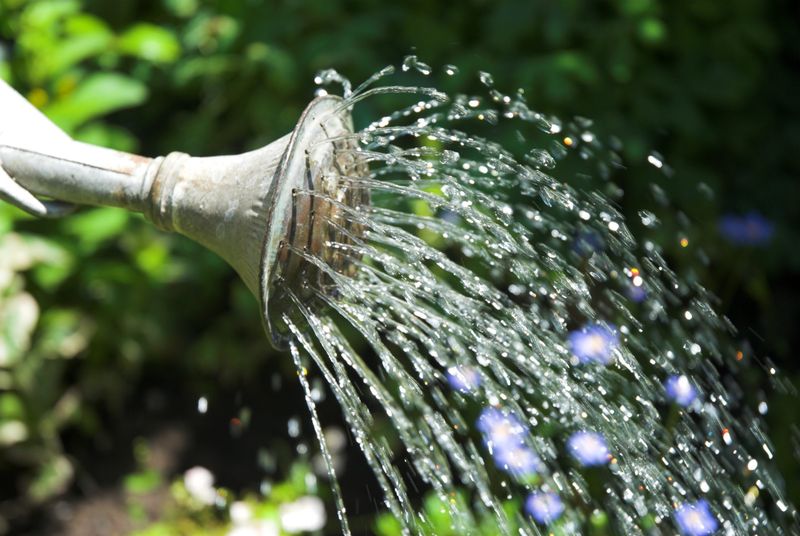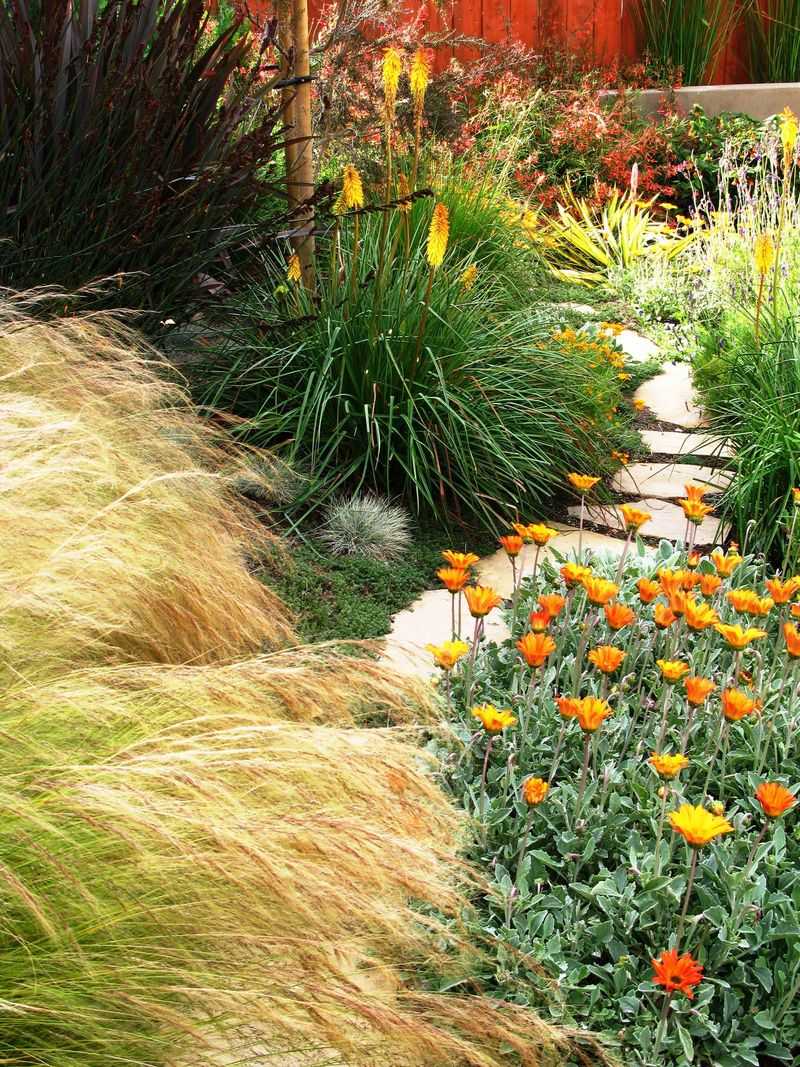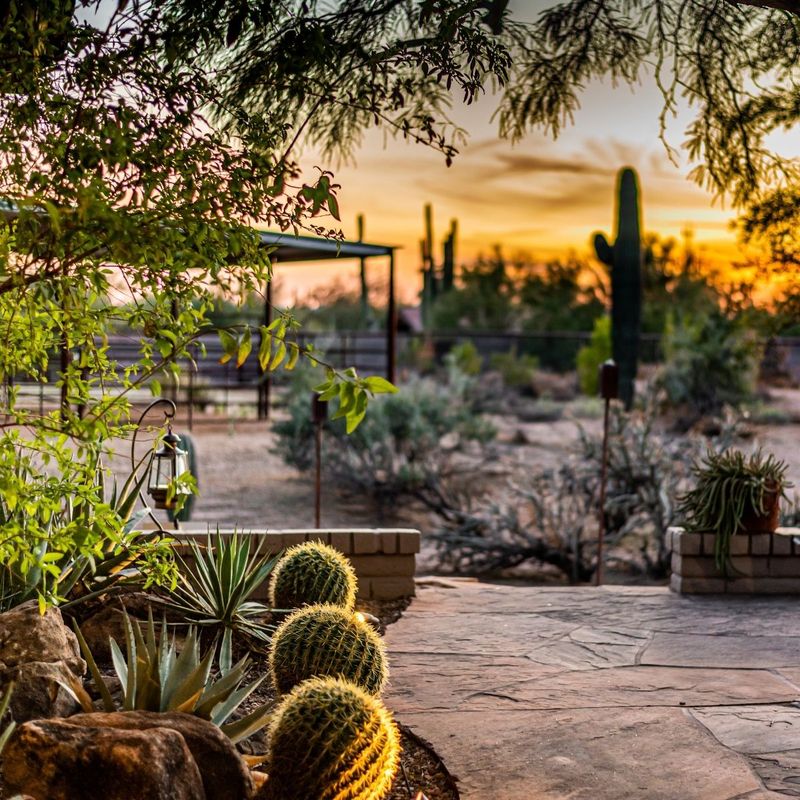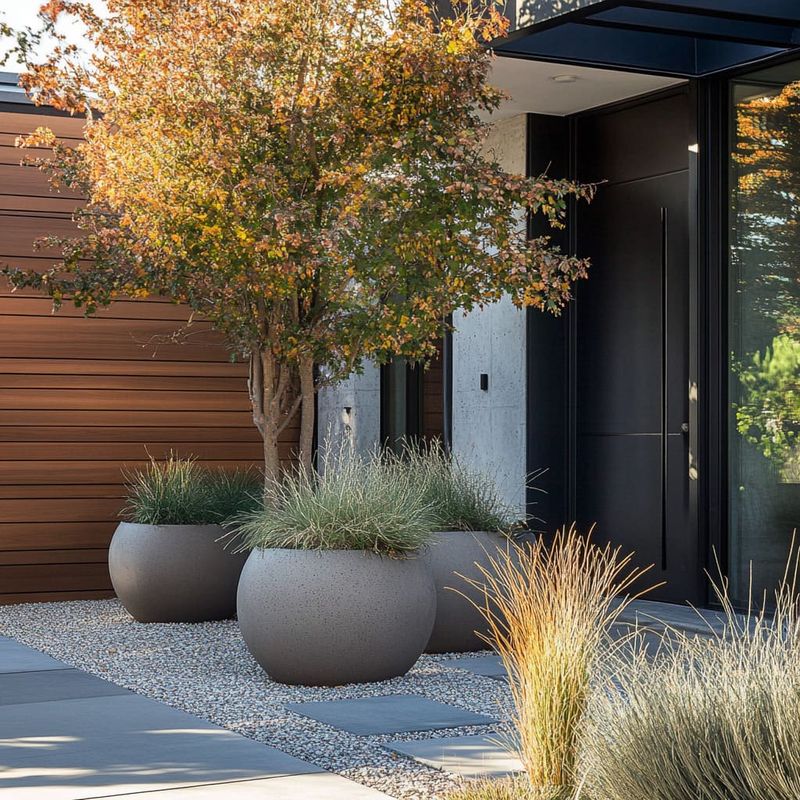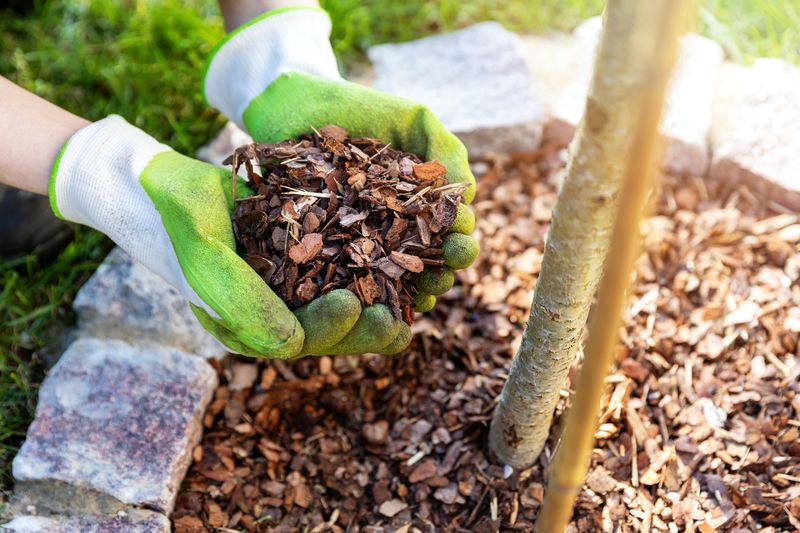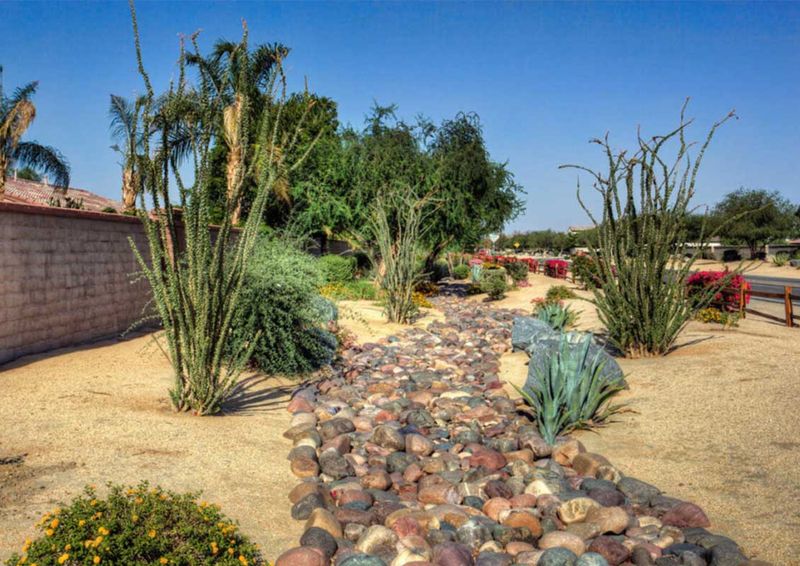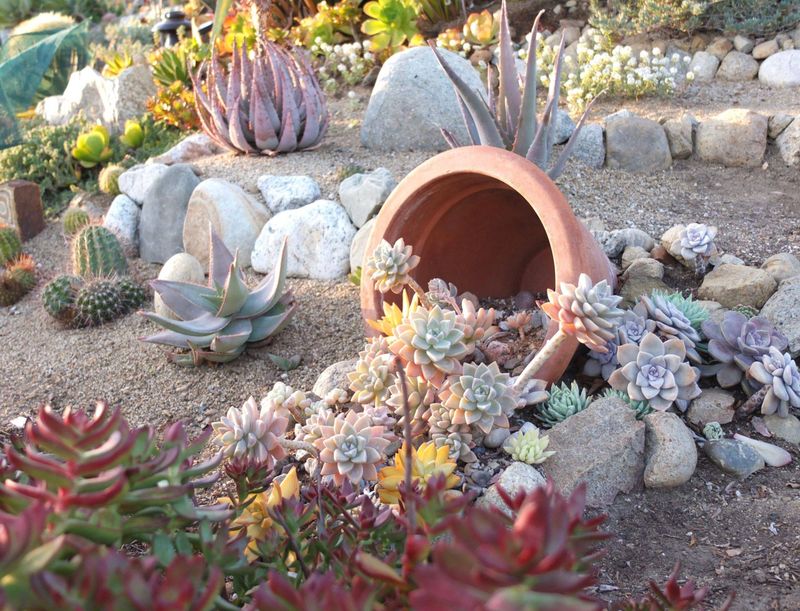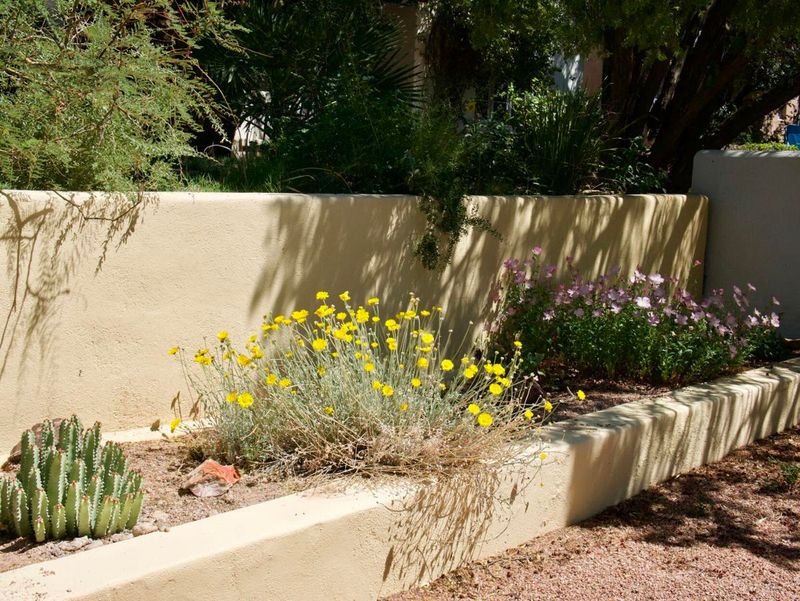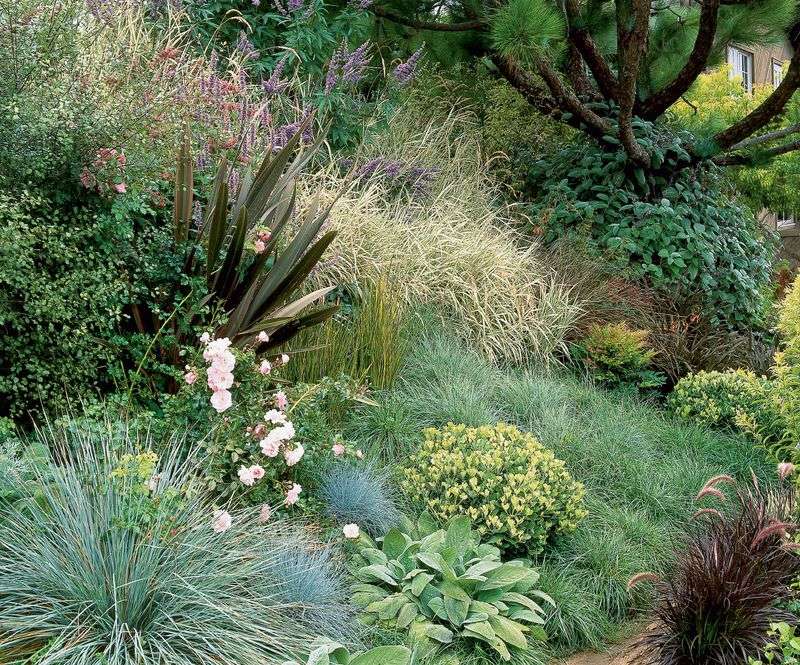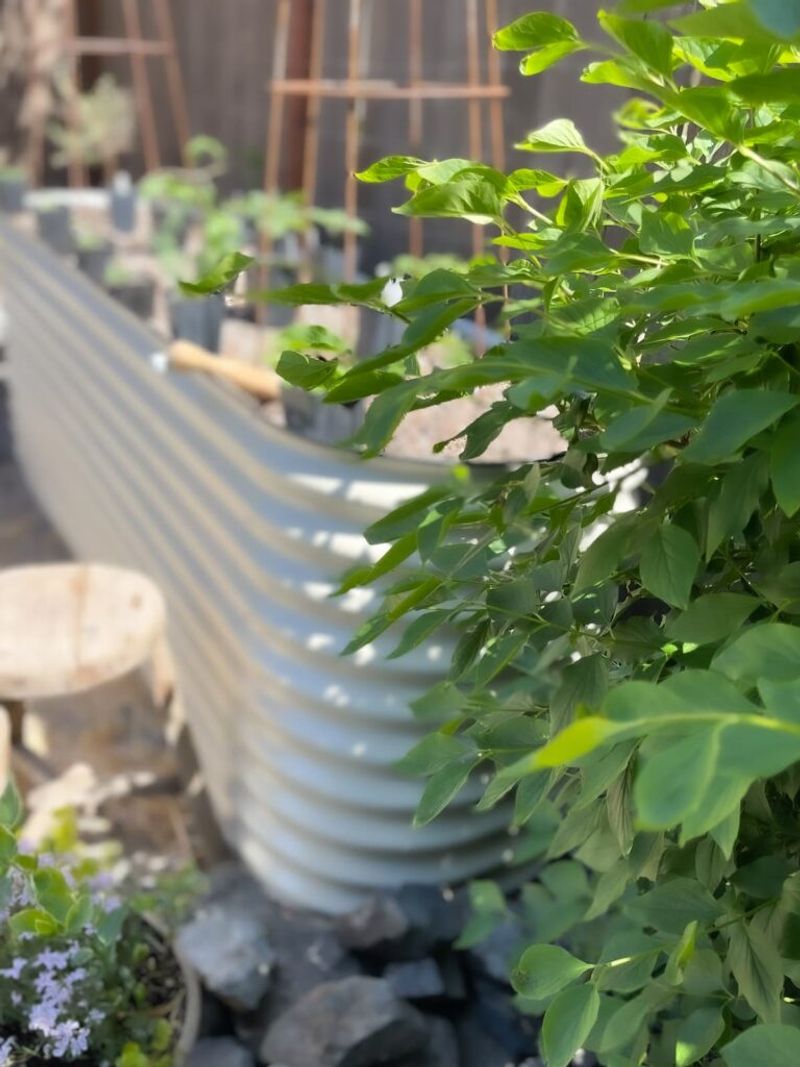Designing a Southwest garden is like building your own desert oasis, tough, but totally worth it! I once tried planting a rose bush in 110°F heat (spoiler: it didn’t survive).
But here’s the thing: the Southwest offers endless beauty when you choose resilient plants and embrace the landscape. Think succulents, cacti, and those tough desert shrubs that laugh in the face of drought.
Water wisely, plan strategically, and let nature be your guide. With a little patience and creativity, your garden will not just survive. It’ll thrive, and you’ll be the envy of the neighborhood!
1. Use native drought-tolerant plants
Start with the basics. Water is a luxury in southwest gardens, so choosing plants like sagebrush that laugh in the face of drought is genius.
The roots of these plants know how to dig deep for water, making them resilient even during dry spells. It’s like having a financial advisor for your garden, ensuring it stays cool without breaking the bank.
Native plants not only survive but also add an authentic touch to your garden, enhancing the natural beauty of the southwestern landscape.
2. Incorporate desert succulents like agave and aloe
Succulents are the rock stars of the plant world, and agave takes center stage with its dramatic silhouette. Meanwhile, aloe is the gentle healer, ready to soothe any sunburn your garden might get.
These plants store water better than a camel, making them ideal for the southwest. In addition to their water-saving prowess, succulents add a touch of elegance and sophistication to the garden.
Their unique forms and textures create visual interest, turning your garden into a work of art.
3. Create an oasis with a small water feature
Nothing whispers “cool” like a water feature in a desert garden. A small fountain or pond can make your garden feel like a secret paradise.
The gentle sound of trickling water offers a refreshing contrast to the arid surroundings and invites wildlife visitors like birds and butterflies.
It’s like giving your garden a spa day, rejuvenating the environment and providing a focal point. Even in the hottest months, a water feature can transform your garden into a tranquil retreat.
4. Plant low-water cacti varieties
Cacti are nature’s desert warriors, armed with spines and a no-nonsense attitude. These plants know how to conserve water like no other, making them perfect companions for your southwest garden.
From the iconic saguaro to the quirky prickly pear, cacti bring an edge of toughness to your landscape.
They offer an astonishing array of shapes and sizes, turning your garden into a living sculpture park. With minimal care, cacti can thrive, providing beauty and resilience in equal measure.
5. Opt for clay or terracotta pots for container gardens
There’s something irresistibly classy about terracotta pots. They breathe, allowing air and moisture to circulate around the roots of your plants, which is essential in the dry southwest climate.
These pots are not just functional but also add a rustic charm to your garden decor. Whether you arrange them on a patio or use them to create a container garden, clay pots offer flexibility and style.
Their earthy tones blend seamlessly with the desert landscape, enhancing the natural aesthetics of your garden.
6. Choose plants with fancy flower colors, like lantana
Who says the desert can’t be colorful? Lantana flowers bring a party to the garden with their classy hues and playful clusters.
These plants are like the extroverts of the plant world, attracting pollinators and adding color to the landscape. Their blooms stand out against the muted tones of the desert, creating a striking visual effect.
Lantana is hardy and low-maintenance, making it an excellent choice for gardeners looking to add a touch of flair without the fuss.
7. Utilize a gravel or crushed stone pathway
Pathways guide you through your garden journey, and gravel or crushed stone pathways are perfect for the southwest. They offer excellent drainage and are easy to maintain, making them practical and stylish.
Walking on a gravel path feels like a mini adventure, crunching underfoot as you explore your garden’s hidden corners.
These pathways also reflect the desert’s natural beauty. With a well-designed path, your garden becomes an inviting space, encouraging exploration and discovery.
8. Build a dry creek bed for drainage
Dry creek beds are more than just pretty features; they’re problem solvers in disguise. When rain comes, these beds channel water away from your plants, preventing waterlogging.
It’s kind of like having a built-in drainage system that’s both functional and beautiful. With strategically placed rocks and pebbles, a dry creek bed can mimic the natural flow of water.
This feature not only enhances the landscape’s aesthetics but also supports the garden’s health and sustainability.
9. Add ornamental grasses like blue fescue
Grasses are the unsung heroes of garden design, and blue fescue is a star in its own right. Its cool bluish hue and tidy mounds bring a sense of calm and order to the garden.
Unlike high-maintenance lawns, ornamental grasses require little water and care, making them perfect for the southwest.
They add movement and texture, creating a dynamic landscape that changes with the seasons. Blue fescue fits seamlessly into the desert environment, offering both visual appeal and practicality.
10. Mix in herbs such as rosemary and lavender
Herbs like rosemary and lavender are the multitaskers of the plant world. Not only do they look good with their fine foliage, but they also smell divine.
These herbs thrive in dry conditions, making them ideal for a southwest garden. They bring culinary delights to your doorstep, ready to spice up any dish.
Additionally, their aromatic qualities can create a sensory oasis, attracting bees and butterflies. By incorporating herbs into your garden, you add beauty, functionality, and luxury.
11. Group plants by water needs for efficiency
Think of your garden as a community with diverse needs, and grouping plants by their water requirements is like creating neighborhood associations.
This method ensures that each plant gets exactly what it needs without wasting resources. In the southwest, where water is precious, efficient watering strategies are key.
By grouping plants with similar water needs, you create a harmonious garden that’s easy to maintain. This approach not only conserves water but also fosters a thriving environment.
12. Incorporate natural stone for hardscaping
Natural stone is the secret ingredient that elevates garden design to the next level. It’s like giving your garden a solid foundation, adding structure and elegance.
In the southwest, stone works in harmony with the natural landscape, reflecting the rugged beauty of the desert.
Whether used for pathways, borders, or seating areas, natural stone enhances the garden’s aesthetic appeal. It also requires minimal maintenance, making it a practical choice for busy gardeners.
13. Use colorful decorative tiles or mosaics
Tiles and mosaics bring a playful creativity to garden design that’s hard to resist. Imagine a colorful pathway that invites you to explore every corner of your garden.
These decorative elements add a personal touch, reflecting your style and personality. Where the landscape can be muted, colorful tiles stand out, drawing the eye and creating focal points.
They offer color and personality, turning ordinary garden spaces into extraordinary art installations.
14. Design shaded areas with mesquite or palo verde trees
Shade is a luxury in the desert, and trees like mesquite and palo verde are nature’s way of offering respite from the sun’s harsh rays.
These trees provide cool, inviting spaces where you can relax and enjoy your garden. Their airy canopies allow dappled sunlight to filter through, creating a soothing atmosphere.
By incorporating these trees into your garden, you add layers of interest and a touch of elegance. They also support local wildlife, enhancing the ecological balance of your garden.
15. Integrate wind-resistant plants like yucca
The desert can be a windy place, and having plants like yucca that can withstand gusts is a smart move. Yucca plants are like the bodyguards of the garden, standing tall and unyielding.
Their striking forms and resilience make them perfect candidates for the southwest landscape. This way you ensure that your garden remains intact and beautiful even in challenging weather.
Yucca’s architectural presence adds drama and sophistication, creating a garden that’s both robust and stylish.
16. Build a southwestern-style pergola
Pergolas are the perfect blend of style and function, offering shade and personality to any garden. A southwestern-style pergola fits seamlessly into the desert landscape.
It creates a cozy outdoor space where you can unwind, host gatherings, or simply enjoy a quiet moment. The structure also supports climbing plants, adding a living canopy that enhances the garden’s beauty.
By incorporating a pergola, you transform your garden into a cool retreat that invites relaxation and enjoyment.
17. Use decomposed granite for walkways and patios
Decomposed granite provides a solid surface for walkways and patios, offering stability and durability. In the southwest, where heat can be intense, decomposed granite helps keep surfaces cooler underfoot.
Its warm, earthy tones complement the desert landscape, creating a cohesive and harmonious garden design.
With low maintenance requirements, decomposed granite is a smart choice for those looking to balance beauty with practicality.
18. Mix in desert wildflowers
Wildflowers are like nature’s confetti, adding bursts of color and joy to the garden. They provide a refreshing contrast to the neutral tones of the desert.
These hardy plants are well-suited to arid conditions, making them a perfect choice for a resilient garden. With their fancy blooms, wildflowers attract pollinators, supporting local ecosystems.
By incorporating these plants, you add diversity and visual interest to your garden, creating a lively and enchanting outdoor space.
19. Incorporate natural boulders for a rustic touch
Boulders are like the silent sentinels of the garden, offering a sense of permanence and strength. Natural boulders blend effortlessly with the landscape, adding texture and dimension.
They serve as focal points and can be used to create seating areas or define spaces. The rugged beauty of boulders enhances the garden’s natural aesthetics.
Adding boulders to your garden boulders, you bring a touch of wilderness to your garden, connecting it to the broader desert environment.
20. Create a butterfly or pollinator garden with drought-tolerant species
Drought-tolerant plants like milkweed and coneflower are stars of the pollinator garden, offering sustenance to these vital creatures.
By designing a pollinator-friendly garden, you support biodiversity and help maintain ecological balance. The presence of butterflies adds movement and life, turning your garden into an oasis.
This approach not only beautifies your garden but also contributes to the health of the local environment.
21. Avoid Overwatering plants
Too much of a good thing can be disastrous, and water is no exception. Overwatering is like giving your plants the spa treatment they didn’t ask for.
It’s essential to be mindful of irrigation practices. Overwatering can lead to root rot and other plant diseases, compromising the health of your garden.
By understanding the specific water needs of your plants, you can maintain a healthy garden that thrives in the arid climate. It’s all about balance and moderation.
22. Avoid Using non-native, high-water plants
High-maintenance plants are the drama queens of the garden world, demanding more than they give. Non-native species often require more water and care, making them ill-suited for the southwest climate.
These plants can struggle to survive, leading to disappointment and frustration. By choosing native, low-water plants, you ensure your garden is both beautiful and sustainable.
It’s like choosing the right cast for a play, where every plant has a role that suits its strengths. This approach leads to a thriving and harmonious garden.
23. Avoid Choosing plants that aren’t heat-tolerant
The desert sun is no joke, and plants that can’t handle the heat are in for a rude awakening. Choosing heat-tolerant plants is like selecting a wardrobe that suits the climate.
Plants that aren’t adapted to the high temperatures may wilt and fade, detracting from your garden’s beauty. Choose heat-resistant varieties, and you’ll ensure your garden remains resilient.
It’s all about choosing plants that can handle the spotlight, thriving under the intense sun.
24. Avoid Installing lawns in dry, arid areas
Lawns and deserts are like oil and water. They just don’t mix. In arid areas, maintaining a lush lawn is a constant battle against nature.
Lawns require significant amounts of water, making them unsustainable in the southwest. With alternatives like groundcovers or xeriscaping, you create a more environmentally-friendly and practical landscape.
This approach not only conserves water but also reduces maintenance efforts. Embracing the natural beauty of the desert allows for creative and sustainable garden solutions.
25. Avoid Using synthetic, non-breathing materials for mulching
Synthetic materials are like plastic wrap for your garden, trapping heat and moisture. Using non-breathing mulch can suffocate your plants.
Organic mulches like bark or straw allow for airflow, helping to maintain soil health. By choosing natural materials, you support the ecosystem and promote plant vitality.
It’s about giving your garden room to breathe and thrive. This simple choice can make a significant difference in your garden’s overall health and appearance.
26. Avoid Neglecting soil preparation and drainage
Soil is the foundation of any garden, and neglecting its preparation is like building a house on sand. Proper soil drainage is crucial in the southwest, where heavy rains can lead to pooling and erosion.
By amending the soil with organic matter and ensuring adequate drainage, you set your garden up for success. Taking the time to prepare the soil properly pays off, leading to a productive garden.
27. Avoid Overcrowding plants in small spaces
Plants, like people, need their personal space to thrive. Overcrowding is like hosting a party in a phone booth. It just doesn’t work.
In small garden spaces, it’s crucial to give each plant room to grow and access sunlight. By spacing plants appropriately, you ensure they receive the nutrients and light they need for healthy growth.
This approach results in a balanced and aesthetically pleasing garden.
28. Avoid Planting without considering sun exposure
Sun exposure is like the stage lighting for your garden performance, and getting it wrong can lead to a flop. Different plants have specific light requirements, and understanding these needs is crucial.
Planting in the wrong spot can lead to poor growth and disappointment. With sun exposure, you ensure that each plant receives the right amount of light, promoting healthy development.
Set the stage for success, allowing your plants to shine under optimal conditions.
29. Avoid Installing invasive species
Invasive species are the bullies of the plant world, muscling out the locals. In a southwest garden, these plants can quickly take over, disrupting the natural balance.
By avoiding invasive species and opting for native plants, you support the local ecosystem and maintain harmony in your garden.
This approach fosters biodiversity and protects the environment. It’s a win-win for both your garden and the surrounding landscape.
30. Avoid Forgetting to create microclimates for plant variety
Creating microclimates is like adding levels to your garden game. These small environmental zones allow you to grow a wider variety of plants, each suited to different conditions.
If you go for elements like shade, rocks, or water features, you can mimic diverse habitats. This approach enhances the garden’s diversity and resilience, supporting a range of plant species.
It’s about thinking creatively and utilizing the natural elements to your advantage. Microclimates offer endless possibilities for designing a dynamic and thriving garden.


